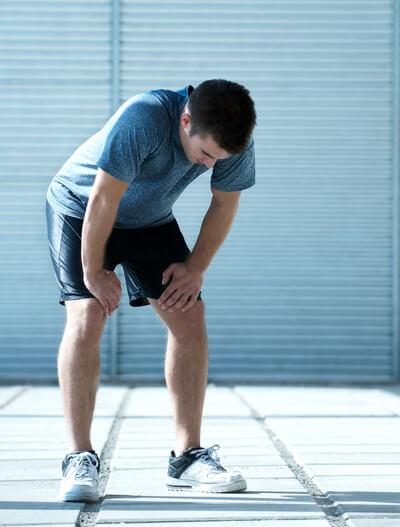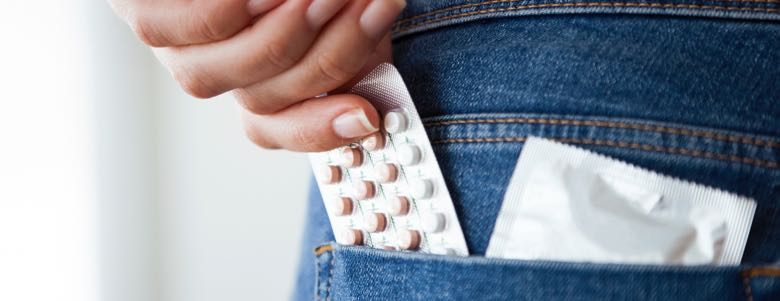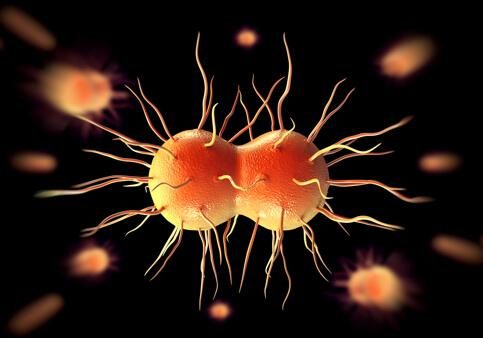Student Health Guide: College Students
If you are a college student, you may be drinking too much, staying up too late and snacking on far too much junk food. Sure, it’s fun. But it’s also unhealthy. Check out these important health tips and concerns.

In fall 2019, the National Center for Education Statistics reported that approximately 19.9 million students were expected to attend a U.S. college or university. And if you are currently one these college students in this statistic, you likely fall under a few other statistics as well.
A 2019 National College Health Assessment Report conducted by the American College Health Association (ACHA) found the major factors that most frequently occurred and most negatively impacted academic functioning for undergraduate students. These factors included stress, anxiety, sleep difficulties,depression and illness. Work, concerns for a troubled friend or family member, and internet use and computer games also ranked high.
The students reported that academics, finances and sleep difficulties caused them extreme difficulty in the past year. Approximately 57.5 percent of the students experienced “more than average” or “tremendous” stress.
A 2018 report issued by the University of Minnesota Boynton Health Service, tasked with conducting a comprehensive survey on the health of college students, found that alcohol use continues to be a concern for universities and colleges. And mental health results showed that depression and anxiety were the two most frequently reported diagnoses of students, with 45.1 percent of students being diagnosed with a mental health condition of any kind in the past 12 months.

Nutrition
Every college student has likely heard of “The Freshman 15.” But in 2008, a study supported by the National Institutes of Health (NIH) challenged that notion and discussed that the evidence for the phenomenon is limited.
In fact, the authors of the study observed an average weight gain of about 2.7 pounds among unmarried freshman students living on-campus, with about 50 percent of the students gaining weight and another 15 percent losing weight. Men were observed to have gained more weight than women.
The study did conclude, however, that freshman weight gain was 5.5 times greater than that of the general population.
A 2015 analysis of studies showed that freshman weight gain is still an issue, with about two-thirds of students gaining weight during their first year of college. However, this study recorded the amount gained in the first year at closer to seven pounds, with the majority of the weight being gained in the first term.
The authors of the analysis concluded, “Given adolescent weight gain is highly linked to overweight and obesity in adults, a better understanding of university student weight gain is crucial if we are to combat the rising adult obesity prevalence.”
Why Is It a Problem?
The Washington Post published an article in 2016 that attributed the weight gain in freshman students to “generous meal plans, large portions, binge drinking, heavy snacking, more stress and less physical activity.” The author of the article concluded, “Any adult following that unhealthy lifestyle would gain weight, too.”
The authors of the 2015 analysis stated, “In those late adolescent years and early adulthood, transition from secondary school to university is a critical and vulnerable period for body weight changes and unhealthy lifestyle adoption… Given adolescence weight gain is highly linked to overweight and obesity in adults, the significant weight gain at university needs to be further understood if we are to combat the rising adult obesity prevalence.”
The authors noted that according to the World Health Organization (WHO), obesity has reached “epidemic proportions.” WHO reported that approximately 1.4 billion people worldwide are overweight, and another 300 million individuals are considered clinically obese.
- Type 2 diabetes
- High blood pressure
- High cholesterol
- Heart disease
- Stroke
- Cancer
- Sleep apnea
- Osteoarthritis
- Fatty liver disease
- Kidney disease
- Pregnancy problems (for the mother and the child)
The 2018 University of Minnesota Boynton Health Services study found that nearly two-fifths or 43.1 percent of the students surveyed fell within the categories of being overweight or obese.

What Can Be Done?
Some weight gain is normal for the growing adolescent body, but it can become a problem if it is significant and happens over a short period of time. Furthermore, not eating the right portions of healthy foods can starve the body of necessary nutrients and result in a lack of energy, concentration and memory.
TeensHealth from Nemours reported that one study found that freshmen who gained four pounds in just 12 weeks were only eating an average of an extra 174 calories per day. Cutting out one sugary drink or midnight snack each day could fix the problem.
- Avoid eating when stressed, while studying or while watching TV or simply lounging
- Eat your meals slowly
- Eat at regular times and don’t skip meals
- Keep all snacking to a minimum
- Keep nutritious foods and snacks, such as fruits, nuts, yogurt, vegetables and granola, readily available
- Switch whole fat choices to low-fat
- Watch your portions and avoid additional servings
- Avoid vending machines and fast food establishments
- Avoid or limit soft drinks and other sugary beverages (including flavored coffee drinks), and limit alcohol consumption
The stress and anxiety associated with college, and just making a transition in general, can often result in overeating and other bad health choices. The Washington Post suggested exercise as a more positive alternative to dealing with negative emotions. Regular exercise and proper sleep habits contribute to maintaining a healthy weight.
While alcohol contains calories, and over-drinking can result in alterations to your sleep schedule and lead to overeating, it is possible to consume alcohol in moderation and still avoid weight gain. One drink a day for women and two drinks a day for men, choosing light beers or wine spritzers and alternating alcohol with water, are all ways to avoid extra, unneeded calories.

Sleep
Dr. James R. Oelschlager of the Florida Institute of Technology Counseling and Psychological Services said that “getting six to eight hours less sleep than usual over a week can impair mental efficiency and reaction time, and cause depression, anxiety and irritability.”
Sleep is vital for everyone, not just for college students. But as a college student, you may be more prone to sleep deprivation due to late-night studying and an inability to fall asleep or stay asleep.
Medical director of the now-shuttered Sleep HealthCenters in Brighton, Mass., Dr. Lawrence Epstein said that how much sleep a student is getting is directly associated with how well they perform in school. He reported to the American Academy of Sleep Medicine that “recent studies have shown that adequate sleep is essential to feeling awake and alert, maintaining good health and working at peak performance.”
Epstein also pointed out that two weeks of six hours or less of sleep a night is comparable to going without sleep for 48 hours straight. And new research shows that getting enough sleep is imperative to an individual’s cognitive functioning, including, of course, learning and memory.
The University of Georgia University Health Center said that sleep is the time during which your brain “organizes, sorts and stores” everything that has been learned and experienced throughout one’s day, making it easier to recall the information at a later date. Your brain can get rid of any irrelevant information and make memory connections that had not been made while you were awake.
Beyond academic performance, sleep is important for a student’s overall health and well-being. Getting enough sleep at the right times protects mental health, physical health, overall quality of life and safety. In teens especially, sleep is assisting in the body’s and mind’s growth and development.
According to the NIH, sleep can help a person’s mental health by enhancing learning and problem-solving, helping individuals control emotions and behavior, and assisting in an individual’s ability to cope with change.
- Healing and repair of the heart and blood vessels
- Maintaining a healthy balance of hormones that signal our brains of when we are hungry or full
- Controlling the effect of insulin (the hormone that controls blood glucose – sugar – levels) on our bodies
- Triggering the hormone that promotes natural growth, boosts muscle mass, and repairs cells and tissues
- Playing a role in puberty and fertility
- Supporting your immune system to keep you healthy
What’s the Problem?
A study published in the Journal of Adolescent Health found that only 30 percent of students get the recommended number of hours of sleep each night.
In the 2019 National College Health Assessment Report, 25.9 percent of students surveyed said that daytime sleepiness or lack of sleep was “more than a little problem,” while 13.8 percent of the students said it was “a big problem.”
Another 5.9 percent said that sleep was “a very big problem” for them, and about 20 percent of undergraduate students said they felt tired for six or more days out of a week. About 13.5 percent of graduate students said the same, meaning about one-seventh to one-fifth of college students are tired essentially all the time.
Psychology professor at University of St. Thomas in St. Paul, Minnesota, Roxanne Prichard, stated in a report, “Students underestimate the importance of sleep in their daily lives. They forgo sleep during periods of stress, not realizing that they are sabotaging their physical and mental health.”

Lack of sleep can result in several consequences to a student’s physical and mental health, as well as their academic performance. It can lead to impaired concentration levels and reaction times and a reduction in overall alertness. In college athletes, not getting enough sleep can result in poor physical performance as well.
According to the Division of Sleep Medicine at Harvard Medical School, learning is made up of three brain processes, including acquisition of new information, consolidation of memory connections, and recall of stored data. When a person lacks sleep, all three of these processes are disrupted, but particularly noticeable are the effects to acquisition and recall. That is due to increased difficulty in concentration associated with inadequate rest.
Most importantly, though, is the effect to memory consolidation. While the other two categories can be remedied with sleep on subsequent nights, memory consolidation cannot be made up. According to the article published by Harvard Medical School, this means that “the brain will be less able to retain and make use of information gathered on the day before the all-nighter.”
“There is ample evidence to indicate that the lack of adequate nighttime sleep can lead to disturbances in brain function, which in turn, can lead to poor academic performance.”
Health and Safety
After several nights of losing even just one or two hours of sleep, a person’s ability to function suffers as though they have not slept at all for one to two days. This continued lack of sleep can lead to what is called microsleep, which refers to brief moments or seconds of sleep that occur when a person is normally awake.
Microsleep is not something that a person can control, and many people are not even aware that it is happening. A common example of this is driving some place and not being able to recall getting to your final destination.
In fact, studies show that sleep deprivation can affect a person’s driving ability just as much as being intoxicated. According to the National Highway Traffic Safety Administration (NHTSA), drowsy drivers account for an estimated 91,000 car accidents each year, resulting in about 795 deaths.
- More illness, such as colds and the flu
- Higher levels of stress
- Feeling sad or depressed
- Increased weight gain and/or obesity
- Increased levels of anxiety
- Worsening chronic lung and heart disease
- High blood pressure
- Heart failure
- Stroke and/or mini-stroke
- Diabetes
- Attention-deficit hyperactivity disorder (ADHD)
Sleeping or napping too much can also be a problem. The University of Georgia University Health Center found that 30 to 50 percent of college students nap, but nappers often sleep less at night than non-nappers. The school health center recommends that if a nap is needed, it should be taken early in the day and limited to no more than 20 to 30 minutes.
Oelschlager noted that people who sleep less than the average of eight hours a night are generally found to be “more active, sociable, ambitious and extroverted” than those sleeping more than eight hours a night. Those sleeping too much are typically found to be more “introverted, critical and significant worriers.”
What Can Be Done?
There are some steps that college students can take to ensure they are getting sufficient sleep each night, starting with allowing enough time to sleep. Dr. Jane F. Gaultney said that when 15 college students were asked to sleep as much as possible at night during a study, “daytime sleepiness decreased, and reaction time, mood, and fatigue improved.”
- Go to bed and wake up at the same time every day
- Try to keep the same sleep schedule on weeknights and weekends — staying up late and sleeping in late on weekends can disrupt your body clock's sleep–wake rhythm.
- Use the hour before bed for quiet time — avoid strenuous exercise and bright artificial light, such as from a TV or computer screen
- Avoid heavy and/or large meals and alcohol within a couple hours of bedtime
- Avoid nicotine (cigarettes) and caffeine (soda, coffee, tea and chocolate)
- Spend time outside every day and maintain regular physical activity
- Keep your bedroom quiet, cool and dark
- Take a hot bath or use relaxation or meditation techniques before bed
- Limit naps
- Write down stressful thoughts
- Read a book or listen to music
- Avoid using your bedroom for stimulating or stressful activities
- Invest in a comfortable mattress or pillow
- If you are unable to go to sleep, get out of bed and do something else until you feel tired
How Much Sleep Is Enough?
Most studies and experts recommend at least eight hours of sleep each night for students and even adults; but this recommendation can vary from person to person with some only needing six hours of sleep and others needing up to 10 hours of sleep each night.
Associate professor in the department of psychiatry and behavioral sciences at Stanford University Medical Center and an attending physician at the Stanford Sleep Disorders Clinic, Dr. Clete A. Kushida said that since the necessary amount of sleep can differ from one person to the next, daytime alertness is the most appropriate measure for determining whether an individual is getting enough sleep.
“If you wake up irritable, tired and unenergetic, you are likely not getting enough sleep.”
Oelschlager said “if you wake up irritable, tired and unenergetic,” you are likely not getting enough sleep. He also pointed out, along with Kushida, that the quality of sleep is often of more importance than the quantity of sleep, which explains why some people can wake after several hours of sleep and still feel tired. While lack of sleep is cumulative, one good night of sleep can make up for several nights of unrest.

Diet and Exercise
Diet and exercise aren’t just important for keeping off the extra pounds that can come along with a transition into college life. Sometimes, students have certain diet restrictions that make healthy food choices a necessity. Exercise offers benefits beyond just weight loss or maintenance.
An article published in U.S. News & World Report in 2012, reported that exercise makes you “happier and smarter.” Harvard Medical School psychiatrist and author John Ratey said just 10 minutes of physical activity can promote positive changes in your brain. Ratey said, “Exercise is the single best thing you can do for your brain in terms of mood, memory and learning.”
- Reverse the negative effects of stress
- Lift your mood and ward off depression
- Improve learning
- Boost self-esteem and improve body image
- Leave you feeling “euphoric” (intense happiness, excitement or confidence)
- Maintain brain functioning, including memory and vocabulary skills
- Lower your risk for Alzheimer’s (progressive disease that destroys memory and other mental functions)
The NIH said that physically active adults are at a lower risk for depression and declining cognitive functioning (thinking, learning and judgment) as they age. Exercise also lowers a person’s risk for certain diseases, such as coronary heart disease (CHD), diabetes and cancer.
According to NIH, exercise strengthens the heart and improves lung functioning.
Exercise also results in the widening of the body’s capillaries (tiny blood vessels), which allows for more oxygen and enhances the body’s ability to rid itself of wastes.
- Lowering blood pressure
- Lowering fat in the blood (triglycerides)
- Raising “good” cholesterol levels (HDL)
- Managing blood sugar and insulin levels, lowering your risk of type 2 diabetes
- Reducing levels of C-reactive protein (CRP) in your body — linked to inflammation and CHD
- Reducing weight and maintaining weight when combined with a healthy diet
- Helping you give up habits that hurt your health, such as smoking and binge drinking
What’s the Problem?
The National College Health Assessment Report conducted by ACHA in 2019 reported that 80.8 percent of undergraduate and 86.7 percent of graduate students believed their general health to be excellent, very good or good. But only 21.8 percent of undergraduate students and 18.3 percent of graduate students reported engaging in moderate exercise at least five days per week, and 26.8 of undergraduate and 23.9 percent of graduate students reported that they participated in vigorous exercise at least three days per week.

Also, less than 4 percent of undergraduate students and less than 8 percent of graduate students are receiving the recommended five or more servings of fruits or vegetables each day.
On the other hand, too much exercise and not eating enough can result in being underweight, which is also a problem. Extreme dieting can result in an eating disorder, which is a serious medical problem occurring more commonly in females. Types of eating disorders include anorexia nervosa, bulimia nervosa and binge-eating disorder.
The National Eating Disorders Association (NEDA) reported that 35 percent of dieters progress to unhealthy dieting, and another 20 to 25 percent of those individuals develop some form and degree of an eating disorder.
Most eating disorders are developed in adolescence and early adulthood. Often, these disorders go beyond just a problem with food. It is also a need for control over one’s environment, characterized by food restrictions, over-exercising and adopting an unhealthy focus on body weight.
Unhealthy habits linked to diet and exercise among college students may also include the use of diet pills, laxatives, diuretics, and even steroids for college athletes wanting to gain weight fast and hoping to enhance their game performance.
What Can Be Done?
The U.S. Department of Health and Human Services (DOH) recommends 150 minutes per week, or 30 minutes five days per week, of moderate activity, and 75 minutes each week of vigorous activity. Strength training to build muscle and overall body strength should be performed two days a week. This can include exercises such as lifting weights, or doing chin-ups, pull-ups or push-ups.
Walking or biking across campus and to and from classes, doing squats and lifting weights in the dorm room, and/or playing intramural sports are all great ways to stay active in college.
For student-athletes or those looking to gain weight, registered dietitian Jessica Crandall suggested to U.S. News & World Report that students don’t just skip out on nutrition and simply indulge in high-fat foods. Crandall said, “It’s not only calories you’re looking for, but overall nutrition” to support a healthy weight long-term.
U.S. News & World Report suggested instead that students opt for “calorie-rich, nutrient-dense, low-volume” foods. Some examples would include olive oil, avocados, nuts, eggs and cheese.

Sexual Health
According to a 2013 study published by the NIH, the period between the ages of 18 and 25 is defined as “emerging adulthood.” This is a transition period in which individuals no longer feel like adolescents but also don’t yet quite feel like adults. This period is also characterized by one’s acceptance of personal responsibility, including responsibility for one’s sexual health.
The WHO defines sexual health as “a state of physical, mental and social wellbeing in relation to sexuality. It requires a positive and respectful approach to sexuality and sexual relationships, as well as the possibility of having pleasurable and safe sexual experiences, free of coercion, discrimination and violence.”
Individuals of the LGBTQ+ (lesbian, gay, bisexual, transsexual and queer) community are facing their unique obstacles, including an increased risk for sexual assault, according to a new study.
What’s the Problem?
Authors of a 2013 publication by the NIH found that “college-aged youth are at increased risk of negative outcomes related to sexual health compared to the rest of the population.” While nearly 64 percent of high school seniors reported already having some sort of sexual experience, approximately 50 percent of individuals admitted that their “sexual debut” occurred during their college years.

These students are facing a “disproportionate risk of negative health outcomes,” according to the authors of the NIH study. The report found that 29 percent of the specific population was not using condoms and another 11 percent were not using birth control.
The authors stated that with statistics such as these, “it is not surprising that over one-third of new cases of gonorrhea and Chlamydia (both types of STIs) occur in young adults between the ages of 20 to 24.”
The Centers for Disease Control and Prevention (CDC) attributed the higher prevalence of negative sexual health outcomes in adolescents and young adults to a lack of access to quality resources. In a study conducted by von Sakovsky, results showed that 18 to 28-year-olds did not know where to go or how to find appropriate sexual health resources.
The authors of the NIH publication concluded, “Without access to this information, it is less likely that they will enjoy healthy sexual relationships, and they may suffer negative academic outcomes that have long-lasting repercussions.”
Sexually Transmitted Infections
New York University published some findings in relation to the prevalence of STIs among college students, noting that even though students aged 15 to 24 only represented 25 percent of the sexually experienced population, nearly 50 percent of all STIs are occurring within that age group.
The university found that “many young people misperceive their vulnerability to infection,” thereby affecting their decisions associated with their sexual behaviors.
“Many young people misperceive their vulnerability to infection, thereby affecting their decisions associated with their sexual behaviors.”
In 2018, the CDC found that while both young men and young women “are heavily affected” by STIs, young women face the “most serious long-term health consequences,” including infertility affecting an estimated more than 20,000 women each year.
In the same study, gay and bisexual men account for 54 percent of all syphilis cases. Syphilis can result in visual impairment and stroke if not adequately treated, and it can also put an infected person at increased risk for acquiring and transmitting HIV. The study data concluded that about half of men who have sex with men who are infected with syphilis also have HIV.
Unplanned Pregnancy
Becoming pregnant in college may not only be an unplanned event, but it can also shift a person’s continued academic plans. A study published by the NIH in 2013 reported that 61 percent of women who have children after enrolling in community college drop out before earning a degree.
Pregnancy can result in several health conditions to the mother and the baby, including anemia, fetal problems, gestational diabetes, miscarriage (pregnancy loss), preeclampsia (high blood pressure) and preterm labor. Infections, illnesses, smoking and drinking can also cause concerns for the mother and baby during pregnancy.
According to the CDC, several ways to prevent pregnancy include the use of oral pill birth control, hormonal IUD (intrauterine device) or implant, patches, shots, vaginal contraceptive rings, diaphragms, condoms, vasectomy (surgical procedure for males) and abstinence.
Once pregnant, a woman can either carry the baby to term or abort the pregnancy. An abortion is a medical procedure that ends the pregnancy by removing the embryo or fetus and placenta from the uterus by way of surgery or medicine. This procedure comes with its own physical as well as mental risks and complications.
Sexual Assault
In 2020, the CDC reported that about one in five women experience completed or attempted rape in their lifetimes. In a study of undergraduate women, it was also found that 25.9 percent experienced attempted or completed sexual assault during their time in college.
Georgetown University in Washington, D.C., defines sexual assault as “a forcible or non-forcible sexual act or sexual contact that occurs without the consent or permission of the other person.” Sexual assault can include sexual penetration, attempted sexual penetration, or any other sexual act or sexual contact.
The CDC reported links between a history of nonconsensual sex in both men and women and certain adverse health conditions, such as depression, anxiety, suicidal thoughts, post-traumatic stress disorder, sexual health and heart problems. Female victims were more likely to report intimate partner violence in adulthood.
LGBTQ Harassment
An article published in the Journal of Interpersonal Violence in March 2020 stated that previous studies found that “sexual- and gender-minority (LGBTQ+ community) undergraduate students are at greater risk for sexual assault victimization than their [nontransgender] heterosexual peers.”
Authors of the publication found that sexual assault affects 5.2 percent of undergraduate students in the U.S., and 4.1 to 7.5 percent of undergraduates who identified as LGBTQ+ had experienced sexual assault on a college campus.
The study has suggested that a more inclusive campus environment could prevent sexual assault or harassment experienced by LGBTQ+ students.
What Can Be Done?
Most agencies and studies on sexual health for college students have determined that this is an area of joint responsibility for both the college campuses and the students. Results of a 2013 study titled College Students’ Sexual Health: Personal Responsibility or the Responsibility of the College? showed that there is a belief that colleges have a responsibility to provide resources, and students have a responsibility to access them.
One participant of the study pointed out that “that’s the purpose of an institution like this, is… education, not just on a school subject level… just on anything on life… sexual awareness is definitely a key component to life and being knowledgeable of that is definitely… something everyone needs to have.” Another participant said, “No one wants to talk about it while you’re growing up because you’re a kid, but once you’re an adult they think you already know it.”
The conclusion was that “by making resources and referrals for sexual health available, colleges can better serve their students, which will result in improved health outcomes.”
The results of the study also showed that across all campuses, students reported that the college had a responsibility to be welcoming of students in the LGBTQ+ community.
- Using protection (such as latex condoms)
- Getting tested
- If diagnosed, notifying your partner
- Accessing treatment
- Abstaining from sexual activity
- Committing to a long-term mutually-exclusive (monogamous) relationship
The CDC also recommends knowing the numbers to call for help in instances of sexual assault. Aside from 911, several hotlines and other college resources are available to provide emergency response to students who are victims of sexual violence.

Mental Health
Transitioning to college can be a stressful and emotional time for many students.
Anxiety was the No. 1 mental health concern in college students in a 2018 survey of counseling center directors conducted by the Association for University and College Counseling Center Directors.
Almost 59 percent of college students presenting to college counseling centers experienced anxiety, according to the directors, followed by depression at 48 percent and stress at 47 percent. Relationship problems ranked at almost 30 percent as well.
An average of 28.4 percent of students seen in the counseling centers across the various college campuses were taking psychotropic medications (a drug that changes brain function and alters perception, mood and behavior).
- Academic demands
- Financial responsibilities
- Independence
- New environment
- Changes in social and family relations
- Changes in culture
- Social pressures and expectations
- Loss of comfort of the familiar
- Exposure to new people, ideas and situations
- Preparing for adulthood and life after college
A 1999 U.S. Surgeon General’s Report on Mental Health pointed out the “catch-22” of society’s idea of perceived perfection and the undue pressure it places on individuals to continually perform at a level of constant success. The Surgeon General stated in its report, “Americans are inundated with messages about success – in school, in a profession, in parenting, in relationships – without appreciating that successful performance rests on a foundation of mental health.”
What’s the Problem?
Research shows that half of all lifetime mental disorders first become apparent in mid-adolescence with three-fourths appearing by a person’s mid-20s. This age range includes the entirety of a person’s traditional college years. And mental health problems can negatively affect a student’s grades, relationships, physical health habits, and overall college experience and performance.

The 2018 report from the University of Minnesota Boynton Health Service found that four leading factors to negatively impact college students’ performance were stress (number one), sleep difficulties, excessive computer and internet use, and mental health issues.
Students with mental health disorders can also experience various physical ailments, including obesity, metabolic syndrome, diabetes mellitus, diabetic ketoacidosis (potentially fatal condition where the body produces excess blood acids), cardiovascular diseases, viral diseases, respiratory diseases, cancer, sexual dysfunction and pregnancy complications, and oral health problems.
An article in World Psychiatry noted that the lifespan of people suffering from severe mental illness (SMI) is typically shorter than the general population mainly due to physical illness associated with mental health problems.
Additional school difficulties, other than reduced academic performance, may include poor attendance, lack of socialization, various behavioral problems, and lack of attention and/or ability to concentrate.
In 2019, the ACHA reported that 46.2 percent of undergraduate college students suffering from mental health problems felt “so depressed that it was difficult to function.”
Suicide
Suicide is currently the second-leading cause of death among young people (individuals aged 10 to 34). According to the 2019 ACHA survey, about 14 percent of undergraduate college students considered a suicide, and approximately 60 percent of students reported feeling “hopeless” in the past year.
- Talking about wanting to die
- Looking for ways to die
- Talking about feeling hopeless; having no reason to live
- Talking about feeling trapped; in unbearable pain
- Talking about being a burden to others
- Increasing the use of drugs and alcohol
- Acting anxious or irritated; exhibiting abnormal risk-taking or extreme behavior
- Sleeping too much or too little
- Withdrawing; feeling isolated
- Showing rage; seeking revenge
- Mood swings
- Eating changes
- Loss of energy; loss of interest
What Can Be Done?
The National Center for Mental Health Checkups at Columbia University says that identification and treatment of mental health disorders often improves academic success. A study published by the NIH in 2014 said that mental health problems in college students can persist for years, so the earlier the intervention the better the overall prognosis for the progression and trajectory of the disorder.
“A collaborative relationship between university health centers and behavioral health services may lead to an increase in identification and referrals for behavioral health treatments of students with mental health problems.”
The authors of the study concluded, “A collaborative relationship between university health centers and behavioral health services may lead to an increase in identification and referrals for behavioral health treatments of students with mental health problems.”
Treatment may include therapy, medications (such as anti-depressants or mood stabilizers), abstaining from alcohol and drug use, and in some instances, even therapeutic exercises or meditation. Sometimes, treatment involves some combination of therapy and medication.
USA Today College provided some tips for dealing with depression and/or suicidal thoughts in yourself or someone else, including choosing your words carefully, knowing the facts, listening to others, maintaining awareness of your attitude, educating and supporting others, focusing on the positive, being inclusive, and eliminating the stigma surrounding mental health disorders.

Vaccines
Most people know that vaccines are important for babies and children. But vaccines can help protect young adults from deadly diseases as well.
Getting vaccinated may be especially important for college students. Some universities require certain scheduled vaccines prior to attending classes.
College students live in very close proximity to others, sharing dorm rooms, bathrooms, eating areas and other common areas. This constant exposure can make them more vulnerable to germs and serious illness.
What’s the Problem?
Catching vaccine-preventable illnesses not only affects college students’ health but can negatively impact their grades as well.
Researchers at the University of Minnesota discovered that college students who became ill with the flu had to take time away from class and/or performed poorly on tests.
Aside from the flu, other serious diseases can target college students. The meningococcal vaccine covers some common strains of bacterial meningitis. Living in a college dorm puts college students at an increased risk of contracting this illness that can cause permanent disability or quick death.
What Can Be Done
All college students should make sure they are up to date on their childhood immunizations recommended by the CDC.
College students and young adults who are sexually active should be up to date on their HPV (human papillomavirus) vaccines.
HPV infections are extremely common in both sexually active men and women. Most importantly, not everyone knows when they are infected.
In its worst form, the infection can cause cancer. Other strains can lead to the development of genital warts.
All adults up to age 26 should be caught up on the series of HPV vaccines.
In addition, the CDC recommends new or ongoing vaccines for college students and young adults aged 19 to 26 years.
- Flu (influenza) vaccine given yearly
- COVID-19 vaccine given yearly
- Tdap (tetanus, diphtheria, pertussis) if not previously given as a child or adult
- Td or Tdap booster given every 10 years
- Varicella if not previously received or no evidence of immunity
College students with certain risk factors due to health conditions may also require vaccination with one or both types of pneumococcal vaccines and/or one or both types of meningococcal vaccines.
College students and young adults planning to travel internationally, such as studying abroad, may need other additional vaccines.

Alcohol and Drugs
A national survey conducted in 2018 found that nearly 55 percent of college students aged 18 to 22 drank alcohol in the past month, and almost one out of three of those students engaged in binge drinking during the same time frame. The National Institute on Alcohol Abuse and Alcoholism concluded that “drinking at college has become a ritual that students often see as an integral part of their higher education experience.”
In 2018, Michigan News at the University of Michigan reported that illicit drug use among college students had been steadily rising. The article attributed much of the rise to the increased use of marijuana stating that “marijuana use was at the highest level seen in the past three-and-a-half decades.”
Michigan News said that about 43 percent of all college students enrolled full time had used marijuana in the past 12 months, and 25 percent had used marijuana in the last 30 days.
Nonmedical use of amphetamines to stay awake has been decreasing on college campuses. Historically, college students used nonmedical amphetamines more frequently than other people.
Michigan News reported that the use of prescription narcotic drugs, such as Vicodin and Oxycontin, and ecstasy had decreased. Cocaine and LSD use was on the rise among full-time college students. The use was above 5 percent for cocaine and above 4 percent for LSD at the time of the publication of the study results.
The Drug Enforcement Administration (DEA) released data reporting that in 2018 controlled prescription drugs were the second most abused medications and had caused the largest number of overdose deaths since 2001 among illicit drugs.
- Partying
- Self-medication
- Escape and boredom
- Preservation of relationships/peer pressure
- Competing for college admission and achievement
- Balance between obligations and demands – both academic and extracurricular
- Stress
- Desire for “ideal” physical appearance
What’s the Problem?
The National Institute on Alcohol Abuse and Alcoholism said that “harmful and underage college drinking are significant public health problems” that take a toll on students academically and socially. The NIH reported that about one in four college students experiences academic consequences from drinking, including missing a class or classes, falling behind in a class or classes, doing poorly on exams or papers, and receiving lower grades.

Other consequences of college drinking reported by the NIH include suicide attempts, health problems, injuries, unsafe sex and driving under the influence, as well as other behaviors that can result in police involvement.
When it comes to college drug use, the National Council on Alcoholism and Drug Dependence said that national survey data shows that students attending college are at a significantly higher risk of using marijuana for the first time than students not enrolled in college.
A study published by the NIH also showed that nonmedical use of prescription drugs is becoming an increasing illicit drug-use problem among college students nationally. The publication concluded that “college students are exposed to a great deal of misinformation about nonmedical prescription stimulant use due to the popularity of enticing myths.”
The authors found that either students were being told that such medications were “performance enhancers” or “smart drugs” or they were being told that effects of nonmedical use of such drugs are benign. But the study found that nonmedical prescription drug users typically have lower grade-point averages (GPAs) than non-users, and nonmedical stimulant users are more likely to be heavy drinkers and users of other illicit drugs as well.
Even though nonprescription drug use and the sharing of prescription drugs are illegal, a study found that of 81 percent of college students with ADHD, 62 percent gave their medication to someone without a prescription.
Hazing
Drinking is often involved with hazing incidents as well. Hazing is defined by Babson College in Wellesley, Mass. as “any activity expected of someone joining or participating in a group that humiliates, degrades, abuses or endangers them regardless of a person’s willingness to participate.”
The college noted that 82 percent of deaths from hazing involve alcohol. Most incidents, especially those involving deaths, also end in some form of academic expulsion, suspension or banishment from clubs and extracurriculars, and/or criminal penalties, including jail time.
Binge Drinking
The National Institute on Alcohol Abuse and Alcoholism attributes many college alcohol problems to binge drinking. The institute defines binge drinking as “a pattern of drinking that brings blood alcohol concentration (BAC) levels to 0.08 g/dL.”
This equates to about four drinks for most women and five drinks for most men within a two-hour time frame.
Not only can binge drinking affect a person’s health but it can result in car accidents, drunk-driving arrests (DUIs), sexual assaults and injuries. Over time, drinking in excess can cause damage to the liver and other organs.
The institute found that about 1,825 college students between the ages of 18 and 24 die from unintentional injuries resulting from alcohol use, including car crashes. About 696,000 individuals within the same age-range are assaulted by another student who has been drinking, with about 97,000 students reporting sexual assault or date rape that involved alcohol.
It was reported that about 20 percent of college students meet the criteria for an alcohol use disorder (AUD). AUD is a medical diagnosis characterized as “problem drinking that becomes severe,” according to the NIH.
Drug Misuse/Addiction
Taking a drug without a prescription can result in unintended side effects. Certain drugs can interact with certain medical conditions causing potentially harmful effects, according to the DEA. Even over-the-counter (OTC) drug labels contain specific information about appropriate uses of the drugs and warnings associated with improper or unsafe uses of the medications. Mixing two or more drugs, whether prescription or OTC drugs, can result in unexpected side effects as well, including slowed reactions when operating a motor vehicle.
Negative effects can intensify when mixed with alcohol as well.
Overdose
The DEA reported that the number of deaths caused by overdoses of prescription painkillers more than tripled in the past decade. More than 45 people die every day from overdoses of drugs such as Vicodin (hydrocodone), Oxycontin ( oxycodone) and methadone.
Also, a CDC press release in 2017 said that drug poisoning deaths doubled from 1999 to 2007, decreased by 26 percent from 2007 to 2014, and then increased in 2015 among teens aged 15 to 19.
JUULing and Vaping
The CDC has warned that vaping is unsafe for kids, teens and young adults. But many young people aren’t aware of the risks because many think vaping isn’t as harmful as smoking. While experts agree cigarette smoking is more harmful than e-cigarettes, vaping still has many harmful side effects.
E-cigarettes have been the most commonly used tobacco product among young people since 2014, according to the CDC. In 2020, one out of 20 middle school students said they vaped in the past 30 days, and one out of five high school students said they vaped in the past 30 days.
Young adults who vaped nicotine increased from six percent to 22 among college students and from eight to 18 percent in those not in college between 2017 and 2019, according from a study from the University of Michigan.
Researchers are still studying the long-term side effects of vaping, but current studies show vaping harms the lungs. E-juice or vape juice can cause poisoning when inhaled, swallowed or through contact with the skin.
Some recent studies show that vaping may increase the risk of getting sick from COVID-19. One study from Stanford University showed that teens who used e-cigarettes were five times more likely to be diagnosed with COVID-19. Those who vaped and smoked traditional cigarettes were 6.8 times more likely to be diagnosed.
Vaping is especially dangerous for young people because the brain still develops until about age 25, and nicotine can harm brain development, according to the CDC.
What Can Be Done?
The NIH created some strategies to eliminate substance abuse, including dispelling myths regarding nonmedical prescription drug use, promoting awareness of legal risks of prescription drug diversion (sharing), developing campus actions plans, de-stigmatizing college students who choose not to divert prescription medications or engage in illicit drug use, and developing early intervention strategies to assess risk and prevent progression to serious substance abuse and dependence problems.
The institute also points out that higher-risk groups, such as first-year students, student-athletes and members of Greek organizations, should be individually targeted with intervention strategies. The NIH said that programs should be designed to “change students’ knowledge, attitudes and behaviors related to alcohol (and drug use) so that they drink less, take fewer risks and experience fewer consequences.”
- Mental confusion, stupor or coma
- Person cannot be awakened
- Vomiting
- Slow or irregular breathing
- Hypothermia (low body temperature) – bluish or pale skin
Drug addiction is a chronic disease characterized by compulsive or difficult-to-control drug use, despite potentially harmful consequences. While the initial decision to use the drug is often voluntary, repeated exposure leads to brain changes that interfere with a person’s self-control. These brain changes can be persistent, requiring ongoing treatment.
Calling this number connects you with a Drugwatch.com representative. We will direct you to one of our trusted legal partners for a free case review.
Drugwatch.com's trusted legal partners support the organization's mission to keep people safe from dangerous drugs and medical devices. For more information, visit our partners page.

